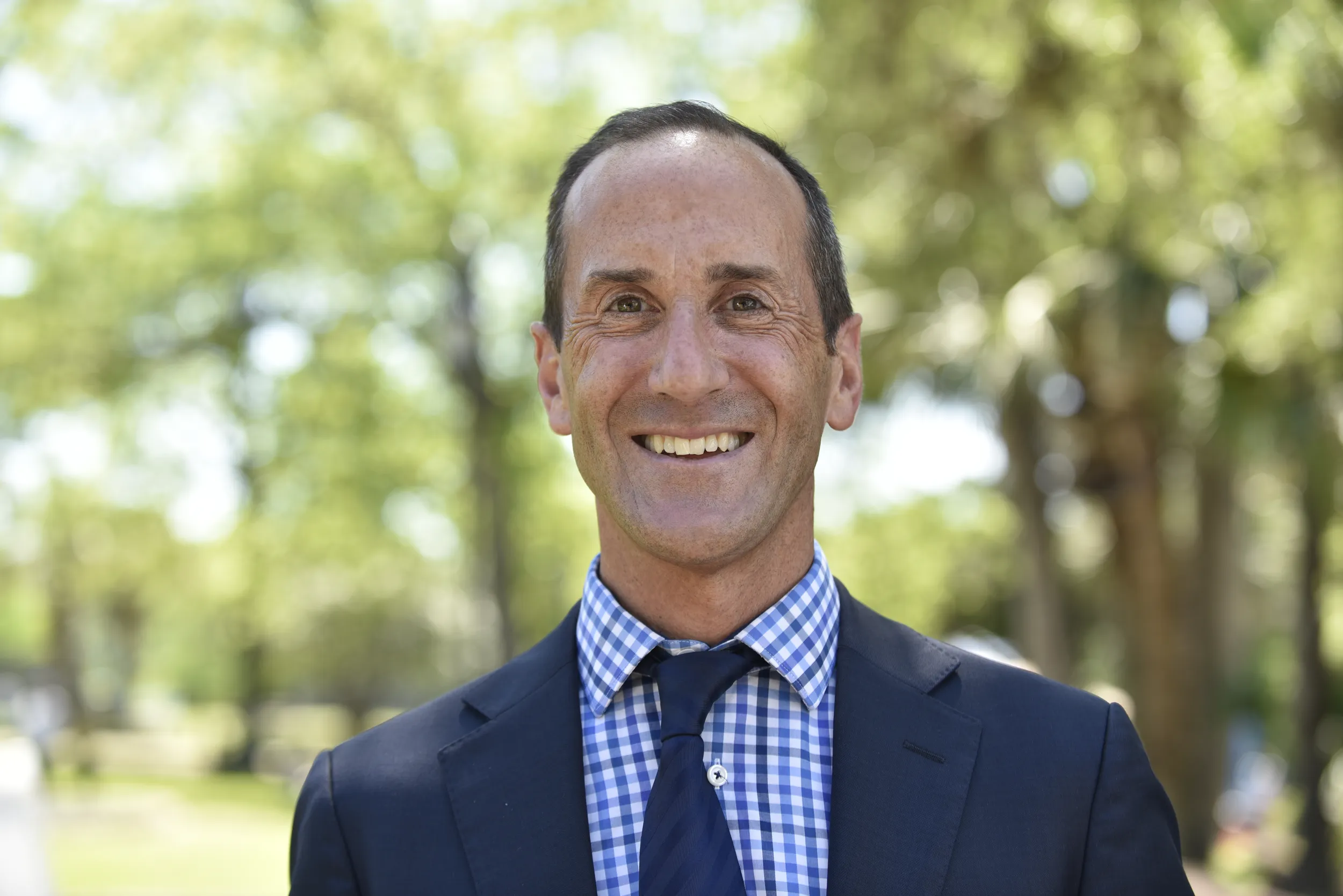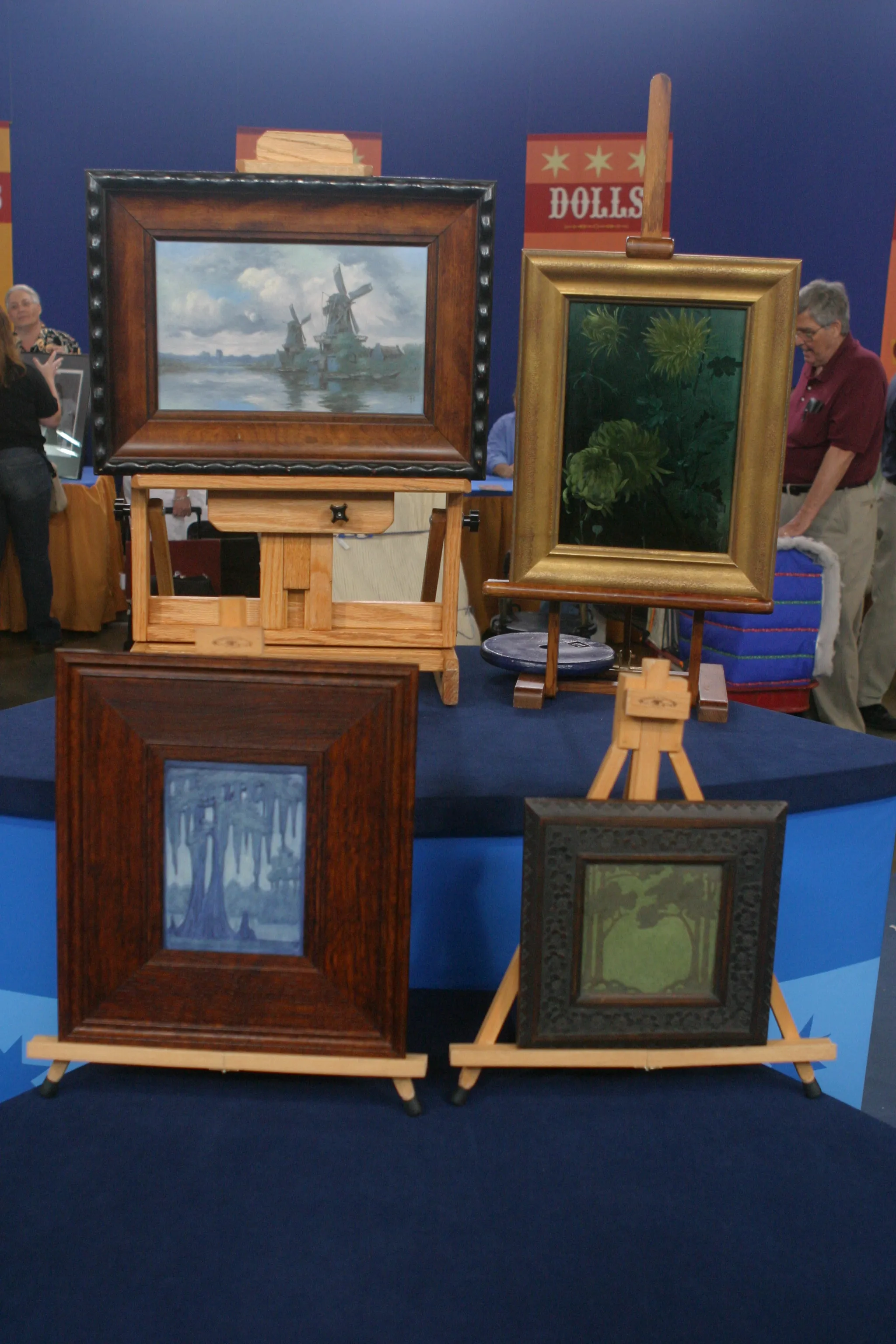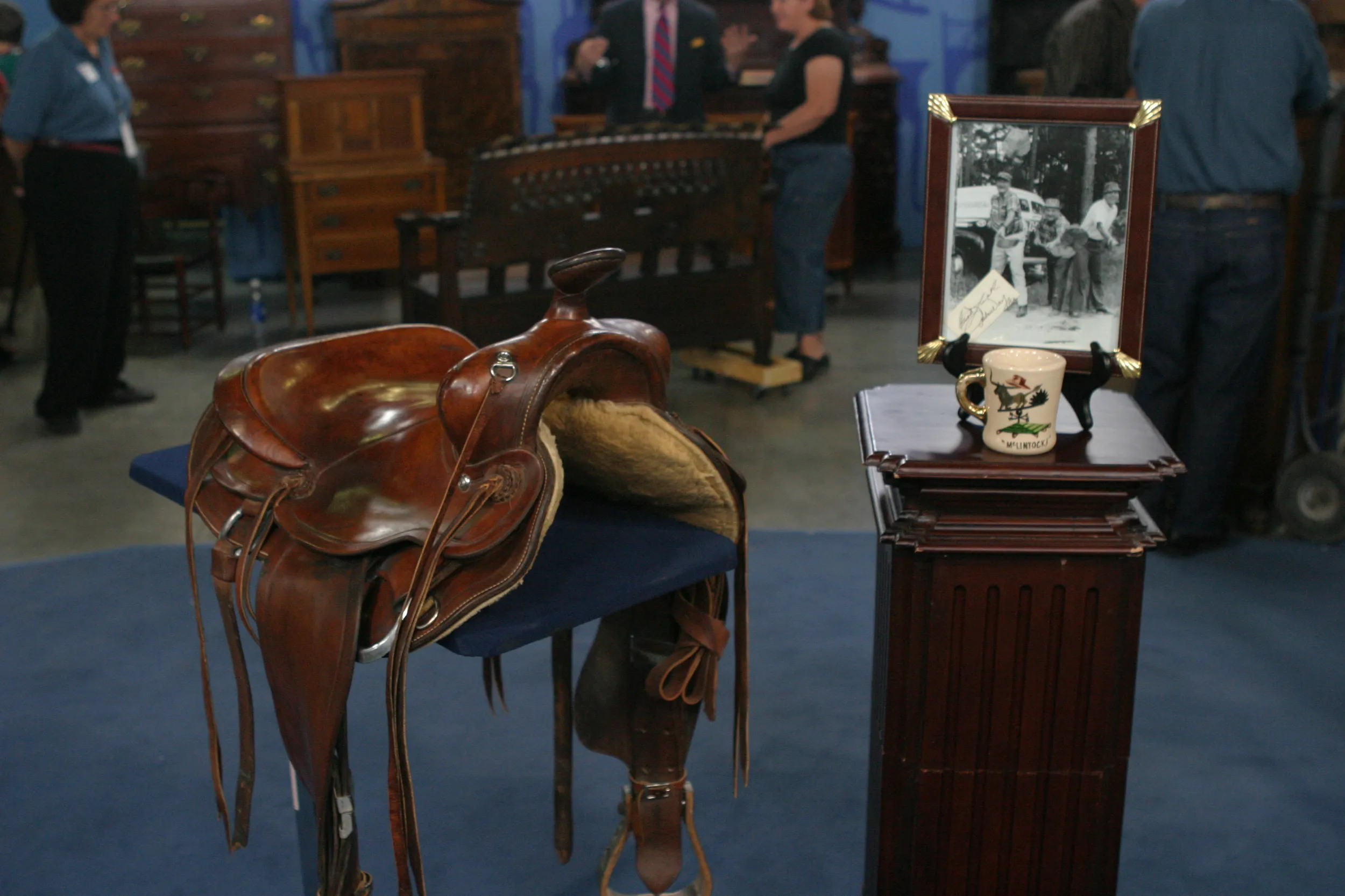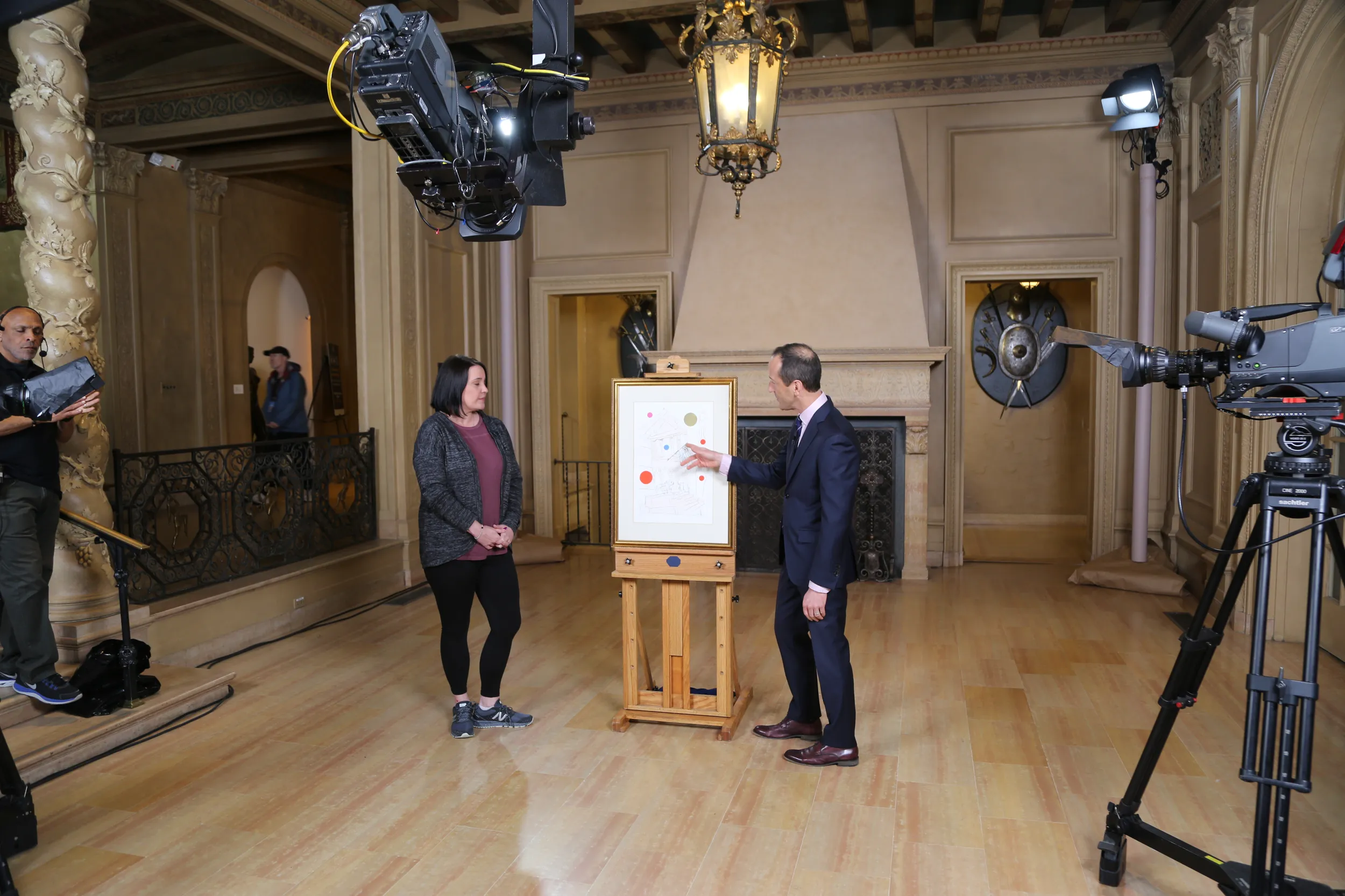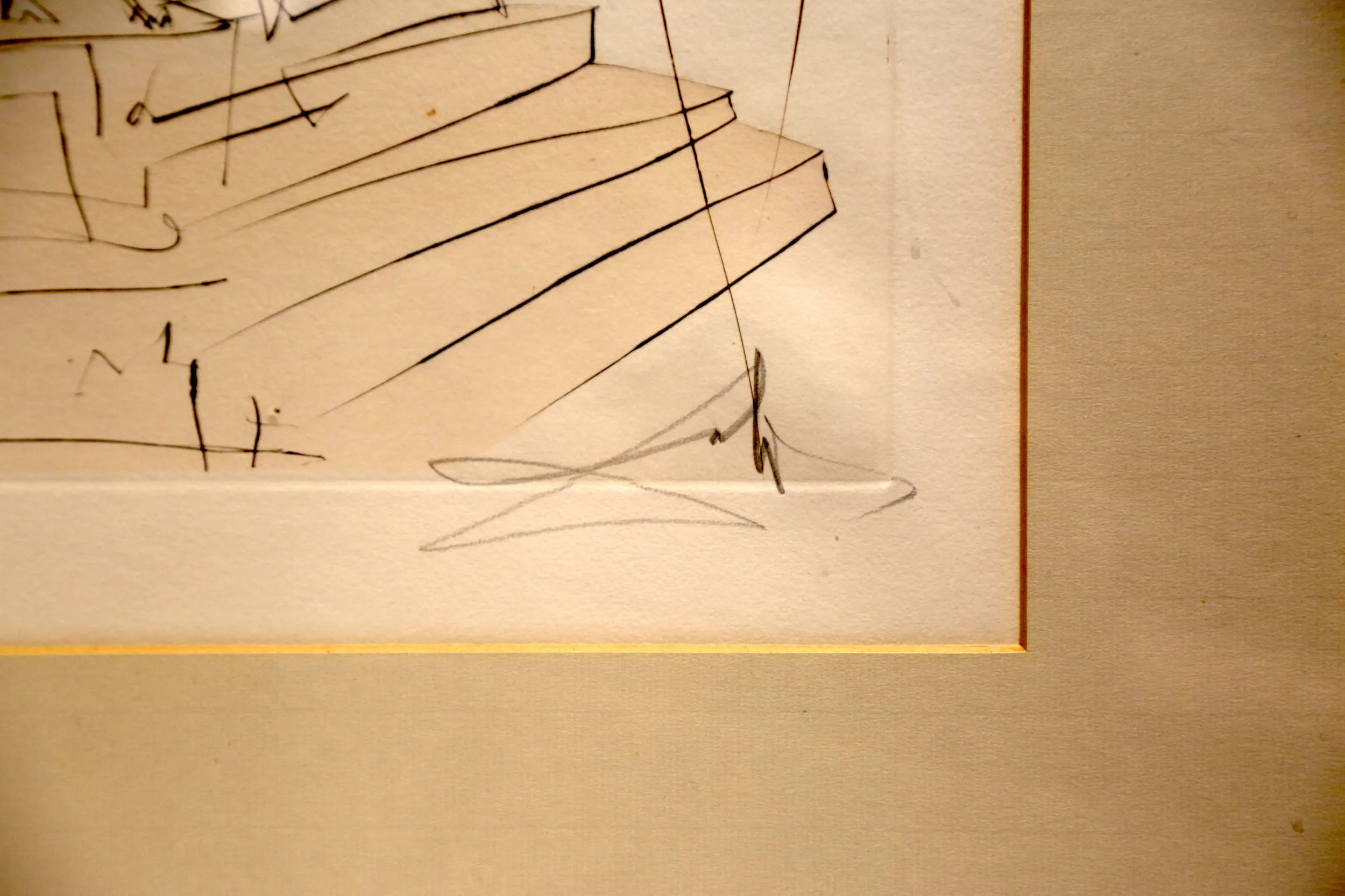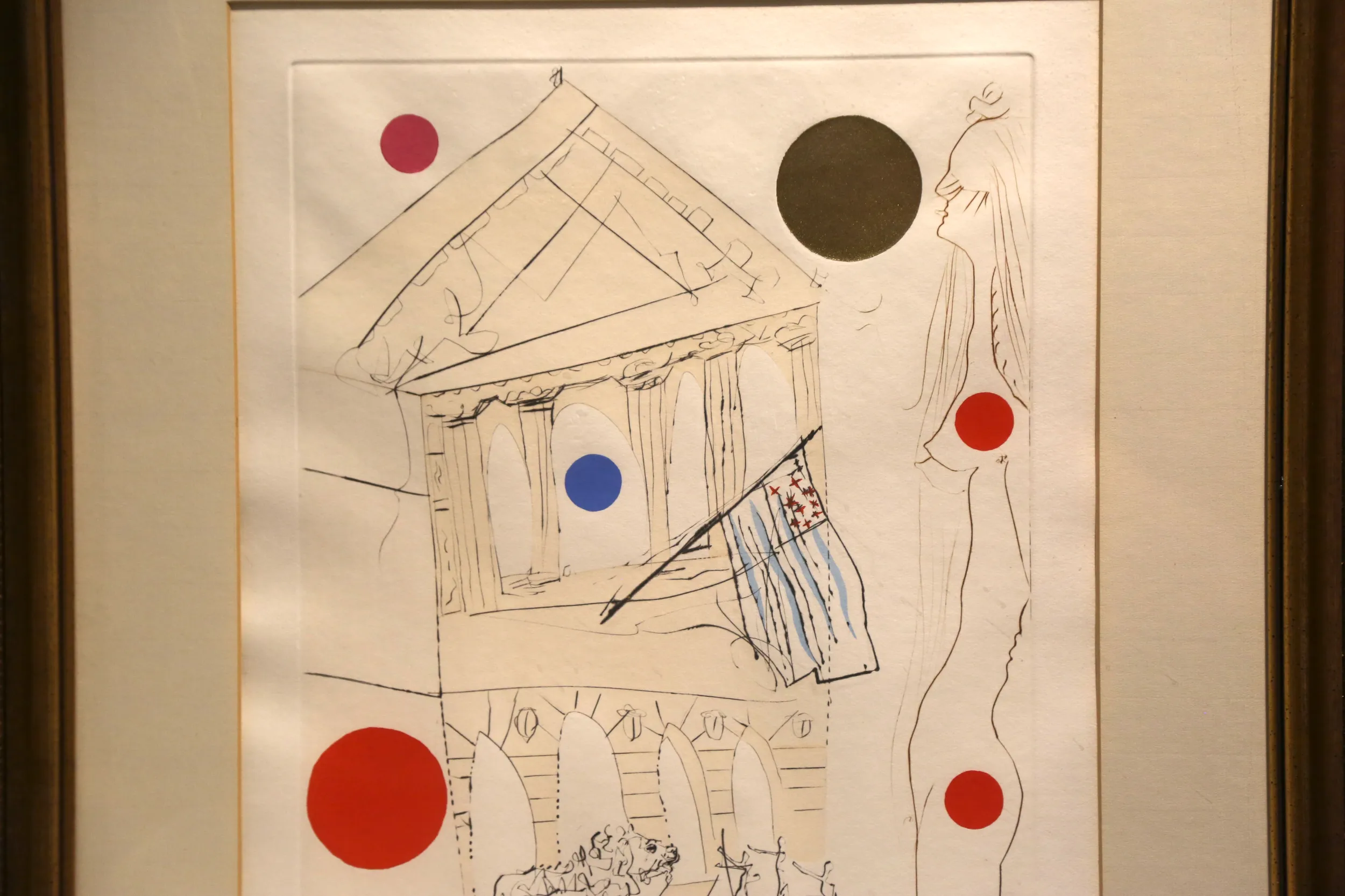GUEST: It was my grandfather's, and then he gave it to my dad, and then my dad gave it to me.
APPRAISER: And how did your grandfather get it?
GUEST: He won it on a radio station-- I guess he was a call-in. He lives in Chicago-- or he did live in Chicago. He's deceased.
APPRAISER: So, it was a Chicago radio station contest?
GUEST: Yes, uh-huh.
APPRAISER: And what do you know about it?
GUEST: I know that it's the Art Institute of Chicago, and it's a lithograph. And it's by Salvador Dalí.
APPRAISER: And you called it a lithograph.
GUEST: Yes.
APPRAISER: It is by Salvador Dalí.
GUEST: Mm-hmm.
APPRAISER: You can see his signature down here. This is actually an etching printed in colors on paper, and the circles in color that you see around were added afterwards by stencil coloring. And you have right here on the center of the facade what is a stylized flag blending the flags of the United States and Chicago with the blue stripes and the red stars. Dalí is a very familiar artist.
GUEST: Mm-hmm.
APPRAISER: People know a great deal about him. One thing that might not be known is, while he was at the height of Surrealism, the forefront of Surrealism in the 1920s and 1930s, he was one of the few artists-- Spanish artists in particular-- not to denounce the Spanish Civil War and the Franco government.
GUEST: Hm.
APPRAISER: At about the same time that Picasso was finishing his famous "Guernica" painting condemning the Spanish Civil War and the atrocities of the war, Dalí was sketching Sigmund Freud's portrait, and hoping to get more famous by being Freud's portraitist.
GUEST: Mm-hmm, right.
APPRAISER: And then, around the same time, he was painting at Coco Chanel's villa on the Riviera in France in 1938. So, while all of this was going on with the war, Dalí was really capitalizing and trying to become more and more famous. Yet, like many European artists in the late '30s and into the 1940s, he turned to America, to flee the war, to be safe.
GUEST: Mm-hmm.
APPRAISER: To come here to a free place, and certainly, Dalí also saw a great deal of opportunity in America. And he and his wife, Gala, lived in the States between New York and California for eight years, from 1940 to 1948, before returning to Spain.
GUEST: Hm.
APPRAISER: And it was in America that he became much more of a commercial success. He was working on movies, he was working as a designer of jewelry, clothes, furniture. And then in the 1960s and 1970s, he turned more and more to printmaking. And this is from a series of four views he did of Chicago in 1972.
GUEST: Mm-hmm.
APPRIASER: And, as you said, it's the steps of the Art Institute of Chicago. You can see the steps here and the famous lion there on the steps, and the facade of the Art Institute. This set of etchings was issued in an edition of 100. We know there are a lot of questions of authenticity when it comes to Dalí.
GUEST: Mm-hmm.
APPRAISER: And the great thing about this is, you got it from your grandfather who won it on a radio program in Chicago.
GUEST: Mm-hmm.
APPRAISER: It was actually published by a Chicago house gallery, Merrill Chase, and you have the original label still on the back of the frame from the publisher.
GUEST: Mm-hmm.
APPRAISER: The numbering is correct, the signature is correct.
GUEST: Mm-hmm.
APPRAISER: There's no doubt you have an authentic Dalí print from the Chicago suite. In this shape, which is more or less perfect to me, I would put a replacement value on it of $5,000.
GUEST: Awesome! Oh, my gosh. That's awesome. I wouldn't think that much, I really wouldn't.
APPRAISER: It's a great view of Chicago.
GUEST: Mm-hmm.
APPRAISER: And, you know, here we are in a, in an art museum...
GUEST: Yeah, and it just...
APPRAISER: ...filming an etching of another art museum.
GUEST: Yeah, right.
